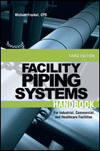State of the industrial PVF industry
Top industry players discuss economic uncertainty and its effect on the supply chain.

Photo courtesy of MKS Pipe and Valve, Kansas City, Kansas.

Photo courtesy of MRC Global.


Think back to this time in 2019. The state of the industrial PVF supply chain, and expectations for the coming year were pretty different than how the market appears today. According to the American Supply Association business intelligence partner, Industry Insights, which prepares the Quarterly Pulse for association members, industrial PVF distributors report an average Q2 sales decrease of 14.9% and a median decrease of 11.5% compared to the same timeframe last year.
Pandemic effects
John Snover, vice president procurement and operations at Greenville, South Carolina-based Eastern Industrial Supplies notes that while the pandemic has presented many challenges, the remainder of the year could see improvement.
“COVID-19 has definitely interrupted our business model, and the loss of counter sales will continue to affect margins, but I am optimistic about the remainder of this year,” he says. “Things such as job delays, new protocols and safety measures, reduction of qualified labor due to increased government benefits and states’ decisions on opening back up (or not) are all things the industrial PVF sector is adapting to right now.”
Jack McCarthy, senior vice president of supply chain management at Houston, Texas-based MRC Global, explains the impacts of COVID-19 will likely continue to lesson over the next few months.
“Our valve, automation, measurement and instrumentation group of products, which represents more than 40% of our business, was most impacted by the pandemic. The supply chain for these products were disrupted for one to six weeks, but heavily impacted countries such as China and Italy have now been allowed to reopen and are working steadily through their backlog. Absent a new spike in COVID-19 cases at their facilities, our manufacturers do not expect further supply chain impacts as a result of the COVID-19 pandemic work stoppages,” McCarthy says.
Steven Adams, president and CEO of Kansas City, Kansas-based MKS Pipe and Valve, says the pandemic’s effect on industrial projects is a case-by-case situation.
“Unfortunately, I’ve seen some projects completely come to a halt, even after contractors have been awarded,” he says. “At the same time, many larger projects have been able move forward.
“Whether you’re working with imported products, or ones manufactured here in the United States also has an effect on the ability to move forward with industrial products,” he adds.
When it comes to product availability, many distributors note that keeping a large amount of inventory is proving to be key to success through the pandemic.
“MRC Global, as of the end of its first quarter 2020, had $878 million in inventory, representing most product classes, with replenishment occurring daily. This level of inventory for many products is generally sufficient to supply our customers’ needs for many months. Throughout the crisis, we communicated with our manufacturers for overall trends as well as specific orders that may have been affected by the country-wide closures,” says Robert Stein, senior vice president, business development and supply chain transition.
Oil pricing and election talk
Oil prices continue to present an ongoing challenge for the industrial PVF supply chain. MRC Global President and CEO Andrew Lane explains customer spending is largely dependent on crude oil prices.
“We started the year with West Texas Intermediate (WTI) crude oil prices at $60 to $65 a barrel. Oil demand collapsed due to the significant decrease in travel from the virus, and oil price decreases have been aggravated by the Saudi-Russia oil-price war and over-supply from earlier this year. In May, WTI crude oil prices were sitting at $20 to $25 a barrel, and are now hovering around $40 a barrel. Also, U.S. natural gas prices remain very low at under $2/mmbtu. Crude oil prices drive cash flow for our customers, which defines their level of spending, which, in turn, drives our business,” Lane says.
In addition to oil pricing, there are other uncertain economic factors affecting the market.
“Low interest rates are keeping inventory levels high despite the COVID-19 slow down and supply chain interruptions. Continued deflation of commodities; stress on margin within all markets; folks trying to survive and meet shareholder expectations; and it being an election year are all things causing market uncertainty,” notes Richy Milligan, senior vice president of sales and marketing with Eastern Industrial Supplies.
Adams agrees that until the election is over, the sector can’t entirely know what to expect.
“It’s a big election year for many reasons. Uncertainty with tax codes is affecting large projects; if you have a corporation that wants to do a $10 million capital expenditure, but they’re not sure how it’s going to be taxed, then there’s probably some concern that money that will stay on the sidelines,” he notes.
Automation and actuation
Milwaukee Valve’s Industrial Product Manager Brian Isaac says the company is seeing increasing demand for on-and-off isolation valves.
“These valves can be resilient-seated butterfly valves, high-performance butterfly valves, ball valves or globe valves,” he says. “Bronze gate, globe and check valves are also in demand, especially in refineries with steam service.”
Automation and automated systems are being installed throughout various industrial PVF applications. Milwaukee Valve notes that for the company, this means an increased demand for actuated butterfly valves.
Adams also mentions that automation is taking off throughout the industry, largely due to lack of skilled labor and the need to cut expenses.
“MKS has definitely seen a lot of automation, and the actuation side of things is growing,” he says. “There’s a lot of expense behind utilizing manpower on industrial products; if opening and closing things can be done with technology and automated products, it saves money on the project.”
Eastern Industrial Supplies also reports popularity of butterfly valves, along with alternative pipe joining methods.
“Butterfly valves are resilient, more economical and easier to install. They are now being made to meet requirements traditionally reserved for gate and globe valves only. Also, alternative joining methods continue to dominate over traditional welded and soldered products in industrial projects such as large chemical plants,” Milligan notes.
Customer focus
The remainder of the year for any market is still full of unknowns, but when asked about expectations and plans in the near future, these industrial PVF players focus on continuing to put customers first and amplifying digital outlets.
“Part of MRC Global’s success has been the result of our ability to adapt to and anticipate the changing demands of our customers. After nearly 100 years, we understand what our customers need and where they want to be in the future,” Stein says.
Milligan agrees, saying, “Eastern Industrial is taking critical action with regard to cost savings measures, focusing even more on customer needs, and we have a determination to stay positive and promote that feeling throughout our company. Continuing to serve loyal customers in the way have always expected from us is key.”
Looking for a reprint of this article?
From high-res PDFs to custom plaques, order your copy today!












